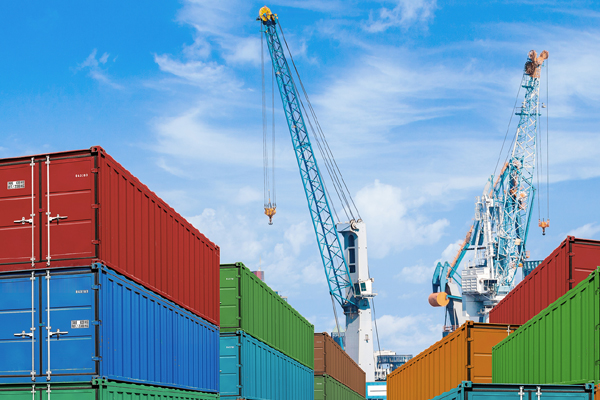
Oman’s logistics industry to undergo change
MUSCAT, March 17, 2016
Oman’s logistics industry is going through a transformation to overcome infrastructure bottleneck, lack of investment in port handling capacity, and poor land transport connectivity with other GCC countries.
Strong support from the government on key infrastructure projects to ease congestion and enhance capacity is the main reason for this transformation.
The key projects include development of national railway network and modernisation of airports with focus on increasing freight handling capacity.
The logistics sector is one of the main non-oil economic sectors and contributed 4.9 per cent to the country’s gross domestic product (GDP) in 2015 and the government is keen on promoting Oman as a leading logistics centre in the region.
The logistics industry in Oman is likely to grow at a compound annual growth rate (CAGR) of 6.9 per cent between 2015 and 2020. The key drivers for economic growth are the infrastructure investments associated with national logistics development plans, economic diversification efforts, and trade with the GCC, Asia and Sub-Saharan African countries.
Oman’s National Rail Network is likely to increase capacity and the Logistics Strategy 2020 aims to provide the infrastructure required for the development of major hubs for handling international cargo.
As a member of the Gulf Cooperation Council (GCC), Oman is likely to benefit from alignment of trade policies and customs regulations, integration of national transport infrastructure with regional transportation corridors in the GCC. The Oman Logistics Plan 2020 and the Oman Logistics Strategy (SOLS) 2040 plan to improve the country’s soft infrastructure, particularly the regulatory environment, support mechanisms, and institutions. Oman’s strategic centralised location in the Arabian Gulf makes it ideal for conversion into a major trans-shipment hub for East-West trade route.
Some of the key trends identified in the country’s logistics industry are:
•Initiated by the Supreme Council of Planning (SCP), the task force has developed the Sultanate of Oman Logistics Strategy 2040 (SOLS 2040).
•Investments on infrastructure and latest technology for upgrading ports, airport facilities, new road links, supported by increased Government spending.
•High priority is given for the development of national rail network to connect with the GCC rail network to improve efficiency and reduce logistics costs.
•Trade with the GCC, Asia, and Europe is likely to remain the major driver for freight forwarding and transportation companies in the region.
•Main exports continue to be mineral fuels, oils distillation by products, while imports comprise manufacturing goods and agriculture products.
The transportation and logistics segment accounted for around $8.81 billion in Oman’s GDP in 2015. The services sector will be the growth engine for Oman’s economy, driven by government focus on logistics, transportation, and tourism industries. Amongst all freight activities in the sultanate, sea transport is the predominant mode, accounting for more than 80 per cent of freight in Oman handled by Sohar and Salalah Ports.
As part of the government’s plan, Port Sohar has been promoted to handle sea cargo as an alternative to Muscat since 2015. Following major upgrades of port facilities, Sohar port handled nearly 50 million tonne of cargo in 2015. Sea freight is likely to grow by 4.8 per cent in 2016, driven by the increasing intra-region GCC trade and due to trans-shipment demand from Asia, Europe, and Africa.
The road freight in Oman is driven by domestic economic activities to meet local demand and land-based trade with other GCC countries. Construction of a new link of a 680 km road between Oman and the Saudi Arabia will provide a more direct route between the two countries as well as reduce the number of border crossings, while increasing road transport efficiencies. As international trade gains momentum with the expansion of cargo handling capacities in major airports, Oman is likely to see a steady upward growth in air freight in 2016. Overall, the Oman logistics industry is likely to grow by 7 per cent in 2016.
Gopal R, global vice president, supply chain and logistics transformation practice, Frost & Sullivan, said: “Oman’s logistics Industry has the potential to be one amongst the key logistics centres in the region.”
“The emphasis on domestic output is creating scope for substantial cargo volume growth to and from Oman. This can trigger enhanced connectivity and network, which would then lead to path of transforming the logistics industry to support trade for other countries as well,” he added.
However, this growth could be challenged by some major factors like surging competition mainly from the UAE and Saudi Arabia, along with other countries with similar portfolio and investment scenario for logistics service, the inefficient logistics infrastructure (especially, in the sub-urban areas) limiting the potential cost and time efficiency of the logistics operations, and shortage of skilled labour relating to logistics services to support the growing requirements of the market, it added. – TradeArabia News Service







